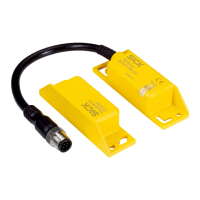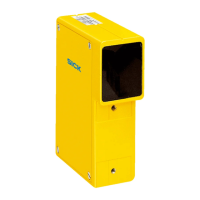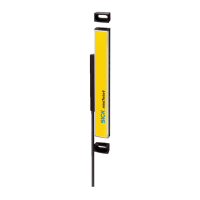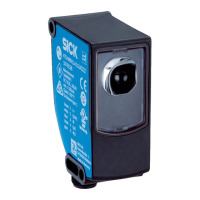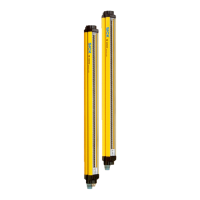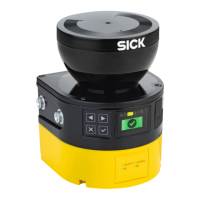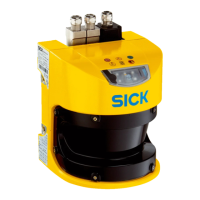Figure 27: Dual-channel and isolated connection of OSSD1 and OSSD2
•
No potential difference can occur between the load and the protective device. The
0 V connections of the load and those of the associated protective device are con‐
nected individually and directly to the same 0 V terminal strip. In the event of a
fault, this is the only way to ensure that there can be no potential difference
between the 0 V connections of the loads and those of the corresponding protec‐
tive device. This is particularly important for loads that switch even if they are acti‐
vated with negative voltage (e.g. electromechanical contactor without reverse
polarity protection diode).
Figure 28: No potential difference between load and protective device
4.4.4 Control inputs
Overview
T
he control inputs accept signals for switching over between different monitoring cases.
Static control inputs are used for information about machine status.
Dynamic control inputs are usually used for information about the speed of a vehicle.
Prerequisites
•
T
he safety-related parts of the control which switch the active protective field pro‐
vide the same safety level as the safety function. In many cases, this is PL d as per
ISO 13849-1 or SIL2 as per IEC 62061.
•
Position-dependent switching is carried out by 2 independently wired signal
sources, such as 2 independent position switches.
•
Speed-dependent switching is carried out by two independently wired signal
sources, such as two independent incremental encoders.
•
Manual switching that depends on the operating mode is carried out using a suit‐
able manual control switch.
4 P
ROJECT PLANNING
38
O P E R A T I N G I N S T R U C T I O N S | nanoScan3 I/O 8024596/15VP/2019-11-15 | SICK
Subject to change without notice

